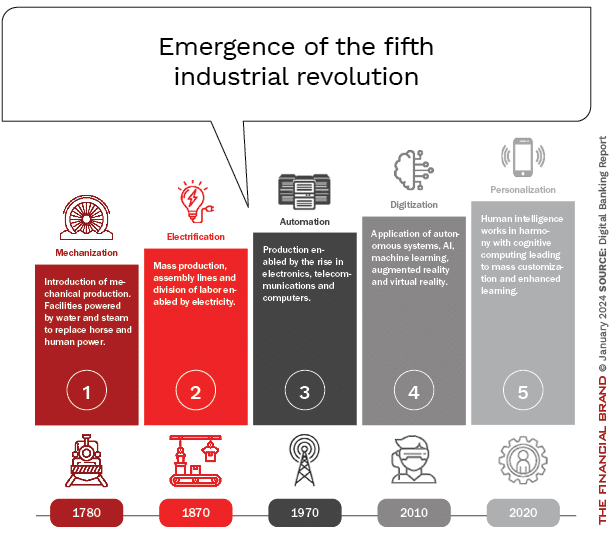What is RAG? More accurate and reliable LLMs

Retrieval-Augmented Generation (RAG) is an AI framework that significantly
impacts the field of Natural Language Processing (NLP). It is designed to
improve the accuracy and richness of content produced by language models.
Here’s a synthesis of the key points regarding RAG from various
sources: RAG is a system that retrieves facts from an external knowledge
base to provide grounding for large language models (LLMs). This grounding
ensures that the information generated by the LLMs is based on accurate and
current data, which is particularly important given that LLMs can sometimes
produce inconsistent outputs; The framework operates as a hybrid model,
integrating both retrieval and generative models. This integration allows RAG
to produce text that is not only contextually accurate but also rich in
information. The capability of RAG to draw from extensive databases of
information enables it to contribute contextually relevant and detailed
content to the generative process; RAG addresses a limitation of foundational
language models, which are generally trained offline on broad domain corpora
and are not updated with new information post-training.
Redefining Quantum Bits: The Graphene Valley Breakthrough

Because quantum information is much more prone to being corrupted – and
therefore become unsuitable for computational tasks – by the surrounding
environment than its classical counterpart, researchers who study different
qubit candidates must characterize their coherence properties: these tell them
how well and for how long quantum information can survive in their qubit
system. In most traditional quantum dots, electron spin decoherence can be
caused by the spin-orbit interaction, which introduces an unwanted coupling
between the electron spin and the vibrations of the host lattice, and the
hyperfine interaction between the electron spin and the surrounding nuclear
spins. In graphene as well as in other carbon-based materials, spin-orbit
coupling and hyperfine interaction are both weak: this makes graphene quantum
dots especially appealing for spin qubits. The results reported by Garreis,
Tong, and co-authors add one more promising facet to the picture. ... The
hexagonal symmetry observed in this so-called real space is also present in
momentum space, where the vertices of the lattice don’t correspond to the
spatial locations of carbon atoms but to values of momentum associated with
the free electrons on the lattice.
5 Ways AI Can Make Your Human-To-Human Relationships More Effective

Understanding your audience is a major challenge for many business leaders.
After all, if you knew what did or didn’t appeal to your audience, it would be
much easier to speak to them in a meaningful, engaging way that sparks lasting
connections. And AI can help here, too. This was illustrated to me during a
recent conversation with James Webb, co-founder and CTO of Comb Insights,
whose app uses proprietary AI to provide sentiment scores on comments on
social media posts. "Using AI to quickly evaluate the overall sentiment of the
comments on a post can give business leaders an immediate understanding of
whether their content resonated with their audience,” he told me in an
interview. “Seeing the ratio of positive to neutral or negative comments, and
seeing the most common words that show up in the comments, can provide quick
insights into why a post succeeded or failed. With this instant understanding
of their audience, businesses can pivot in the type of social media content
they produce so they can strengthen these important digital relationships.”
The missing link of the AI safety conversation

From a practical standpoint, the high cost of AI development means that
companies are more likely to rely on a single model to build their product —
but product outages or governance failures can then cause a ripple effect of
impact. What happens if the model you’ve built your company on no longer
exists or has been degraded? Thankfully, OpenAI continues to exist today, but
consider how many companies would be out of luck if OpenAI lost its employees
and could no longer maintain its stack. Another risk is relying heavily on
systems that are randomly probabilistic. We are not used to this and the world
we live in so far has been engineered and designed to function with a
definitive answer. Even if OpenAI continues to thrive, their models are fluid
in terms of output, and they constantly tweak them, which means the code you
have written to support these and the results your customers are relying on
can change without your knowledge or control. Centralization also creates
safety issues. These companies are working in the best interest of themselves.
If there is a safety or risk concern with a model, you have much less control
over fixing that issue or less access to alternatives.
Intro to Digital Fingerprints
Digital fingerprinting is a technique used to identify users across different
websites based on their unique device and browser characteristics. These
characteristics - fingerprint parameters, can include various software,
hardware (CPU, RAM, GPU, media devices - cameras, mics, speakers), location,
time zone, IP, screen size/resolution, browser/OS languages, network, internet
provider-related and other attributes. The combination of these parameters
creates a unique identifier - fingerprint, that can be used to track a user's
online activity. Fingerprints play a crucial role in online security, enabling
services to identify and authenticate unique users. They also make it possible
for users to trick such systems to stay anonymous online. However, if you can
manipulate your fingerprints, you can run tens or hundreds or more different
accounts to pretend that they are unique, authentic users. While this may
sound cool, it has serious implications as it can make it possible to create
an army of bots that can spread spam and fakes all over the internet,
potentially resulting in fraudulent actions.
Looking at a data-driven financial future for India
In the intricate landscape of financial services, managing vast data, complex
silos, and strict compliance demands a strategic solution. A hybrid data mesh
is an innovative approach to financial operations that brings flexibility and
coherence. This method combines a distributed architecture with an SSOT,
ensuring accurate, secure, and compliant data handling. Data distribution
across systems and functions facilitates quick insights while adhering to
quality and privacy standards. The hybrid data mesh concept integrates the
advantages of a distributed architecture tailored to domain-specific data with
the SSOT, providing enhanced flexibility and scalability. This fusion ensures
data coherence and accuracy while allowing domain independence, reinforcing
security, and streamlining traceable and auditable compliance. Predictive
models can be tailored to specific products or customer segments by harnessing
AI and ML tools, enhancing decision-making in a dynamic market. This
streamlined approach identifies growth opportunities and nurtures a culture of
adaptability and innovation.
L&D trends that will define 2024

AI-assisted coding/software development employs AI to help write and review
code. The potential of the technology to assist new developers in improving
their code and saving time is valuable. The edtech sector, in particular, will
employ AI to create customised learning experiences besides using tools that
offer instant feedback on code. We could be looking at automating assessments
for unbiased, error-free evaluations. Manually identifying personalised
learning journeys for numerous individuals is time-consuming and extremely
difficult. AI-assisted coding can help solve this operational challenge. Soon,
we’ll give users quick, accurate responses and allow them to accelerate their
learning journeys. ... Organisations will focus on data-driven,
business-aligned learning initiatives for specific job-role competencies. This
is to qualify L&D impact by easily tracking employee metrics such as job
performance, efficiency, engagement, and employee satisfaction in new ways.
When properly implemented, the accumulated data can raise confidence levels
among higher-ups and lead to sustained investment in training practices.
Organisations also analyse the information to identify areas of positive
impact and focus on L&D in those regions for frequently better
outcomes.
New Guidance Urges US Water Sector to Boost Cyber Resilience

"Cyber threat actors are aware of - and deliberately target - single points of
failure," the guidance states. "A compromise or failure of a water and
wastewater sector organization could cause cascading impacts throughout the
sector and other critical infrastructure sectors." The incident response guide
aims to provide organizations with best practices for all four stages of the
incident response life cycle - from preparation through detection, recovery
and post-incident activities. The guidance says "the cyber incident reporting
landscape is constantly evolving" and encourages water sector officials to
review their reporting obligations and "consider engaging in additional
voluntary reporting and/or information sharing" measures. Eric Goldstein,
CISA's executive director for cybersecurity, said in a statement announcing
the joint guidance that the U.S. water and wastewater sector "is under
constant threat from malicious cyber actors." "In the new year, CISA will
continue to focus on taking every action possible to support 'target-rich,
cyber-poor' entities like WWS utilities by providing actionable resources and
encouraging all organizations to report cyber incidents," he said.
Banking at the Precipice: Navigating the Fifth Industrial Revolution

As retail banking stands amid the Fourth Industrial Revolution’s digital
transformation, leaders now must prepare for an imminent Fifth Industrial
Revolution poised to profoundly reshape markets and experiences. Defined by
extreme personalization, mass customization and precision augmentation, the
emerging revolution’s exact disruptions remain somewhat undefined. Yet
advancements in generative artificial intelligence, ambient interfaces and
hyper-connectivity hint at consumer-in-command days ahead. ... Most of these
Fifth Industrial Revolution financial applications seem unimaginable today.
Imagine augmented live views layering physical surfaces like a retail store,
billboard or car dealership with tailored offers based on persona
identification and real-time transactional and behavioral data. Moving
further, imagine a ‘digital twin agent’ seamlessly negotiating a personalized
deal or pre-approved financing instantly. In this world, augmented and mixed
reality interfaces, bridging physical and virtual worlds, will be able to move
money experiences from transactions to value-based propositions based on where
your eyes focus and engagements you have had in the past.
How generative AI is changing entrepreneurship
Entrepreneurs are expected to do a wide range of time-consuming tasks, from
writing emails and answering phone calls to orchestrating product
demonstrations and coding a website. “AI does all of those things well,”
Mollick said. “It lets you focus more on what your top skill is, and it kind
of handles everything else.” Generative AI can also serve as a guide. “A third
of Americans have a business idea that they haven’t acted on because they
don’t know what to do next,” Mollick said. “The AI can tell you what to do
next, help you write the emails, [and] help you build the product.” Mollick
noted that users should be aware of the benefits and limitations of the
technology. “It’s kind of like an intern who wants to make you happy and
therefore lies a lot and is kind of naive [and] never admits that they made a
mistake,” he said. “Once you think about [AI] that way, you end up in much
better shape.” Generative AI is a new general-purpose technology — one that
comes around once in a generation and touches just about everything humans do,
Mollick said, like electricity, computers, and the internet have. For
entrepreneurs, generative AI can assist with researching ideas, coming up with
logos and names, creating a website, and more, Mollick said.
Quote for the day:
"Leadership is not about titles, positions, or flow charts. It is about
one life influencing another." -- John C. Maxwell
No comments:
Post a Comment